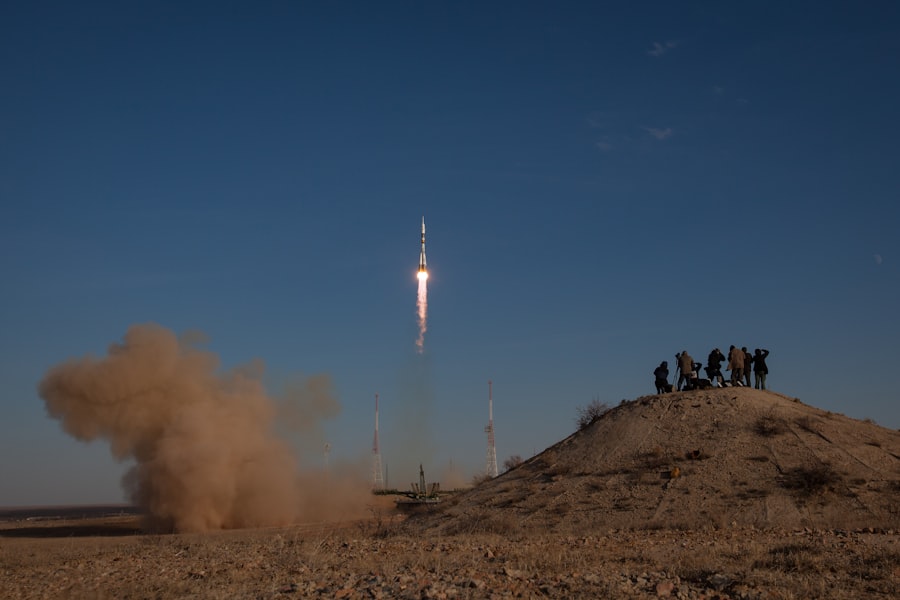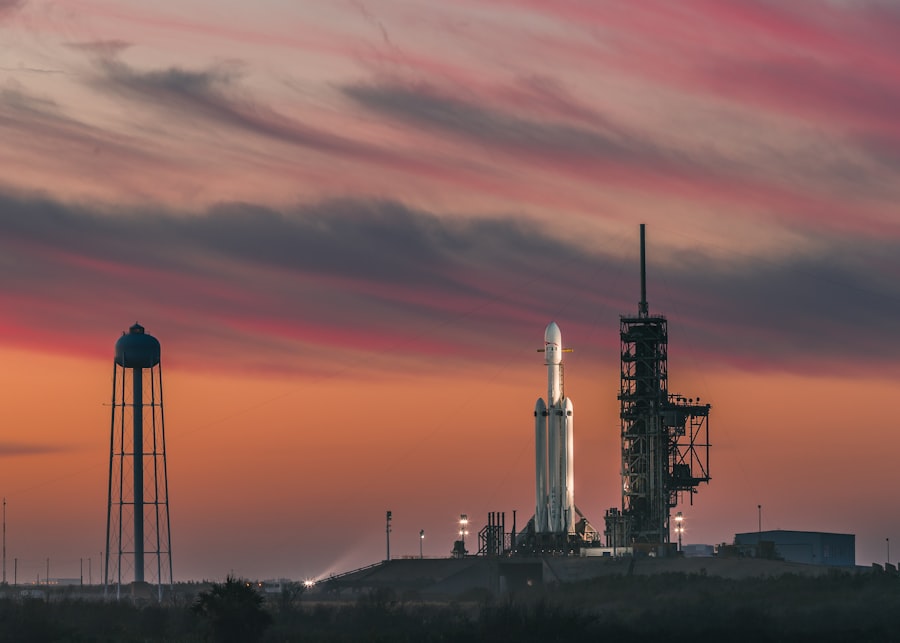SpaceX, the aerospace manufacturer and space transportation company founded by Elon Musk in 2002, has consistently pushed the boundaries of space exploration and technology. The company has garnered significant attention for its ambitious goals, including reducing the cost of space travel and enabling human colonization of Mars. One of the most notable milestones in SpaceX’s journey occurred with its recent successful rocket launch, which not only showcased the company’s technological prowess but also reaffirmed its position as a leader in the aerospace industry.
This launch was a testament to years of research, development, and rigorous testing, culminating in a moment that captured the imagination of millions around the globe. The successful launch was not merely a routine event; it represented a culmination of innovative engineering and strategic planning. With each launch, SpaceX has refined its processes, learning from both successes and setbacks.
This particular mission was significant not only for its immediate objectives but also for what it signifies about the future of space exploration. As SpaceX continues to break new ground, the implications of this launch extend far beyond the immediate achievements, influencing both commercial spaceflight and scientific research.
Key Takeaways
- SpaceX successfully launched its Falcon 9 rocket, marking a significant milestone in the company’s space exploration efforts.
- The rocket carried 60 Starlink satellites, part of SpaceX’s plan to provide global internet coverage from space.
- The launch process included a successful liftoff, stage separation, and satellite deployment, showcasing SpaceX’s technological achievements.
- The successful launch demonstrates SpaceX’s capability to revolutionize space exploration and satellite deployment, positioning the company as a leader in the space industry.
- SpaceX’s successful launch paves the way for future missions, including plans for manned missions to Mars and continued advancements in satellite technology.
Overview of the Rocket and its Payload
The rocket that took to the skies during this successful launch was the Falcon 9, a two-stage rocket designed and manufactured by SpaceX. Known for its reusability, the Falcon 9 has become a workhorse for the company, capable of carrying a variety of payloads into orbit. This particular mission involved deploying a payload that included a mix of commercial satellites and scientific instruments, showcasing the versatility of the Falcon 9 platform.
The rocket’s first stage is equipped with nine Merlin engines that provide the thrust necessary to lift off from the launch pad, while the second stage is responsible for delivering payloads to their intended orbits. The payload itself was a testament to the growing demand for satellite technology in various sectors, including telecommunications, Earth observation, and scientific research. Among the satellites launched were those designed for broadband internet services, which aim to provide high-speed internet access to underserved regions around the world.
Additionally, scientific instruments intended for atmospheric research were included, highlighting SpaceX’s role in facilitating advancements in environmental monitoring and climate science. This blend of commercial and scientific objectives underscores the multifaceted nature of modern space missions and SpaceX’s commitment to supporting diverse applications.
The Launch Process and Achievements

The launch process is a complex orchestration of numerous elements working in harmony to ensure success. In the days leading up to the launch, teams at SpaceX conducted extensive checks on both the rocket and its payload. This included static fire tests where the engines were ignited while the rocket remained secured to the ground, allowing engineers to verify performance metrics without risking an actual launch.
On launch day, a carefully timed sequence of events unfolded, beginning with countdown procedures that included fueling the rocket and final system checks. As the countdown reached zero, the Falcon 9 ignited its engines and lifted off with a powerful roar, marking another successful chapter in SpaceX’s history. The first stage separated from the second stage approximately two minutes into flight, a critical moment that demonstrated the rocket’s reliability.
Following separation, the first stage executed a controlled descent back to Earth, landing on a drone ship stationed in the ocean—a hallmark of SpaceX’s reusability strategy. This achievement not only reduces costs but also minimizes waste associated with traditional single-use rockets. The successful deployment of the payload into orbit further solidified this mission as a significant accomplishment in SpaceX’s ongoing efforts to revolutionize space travel.
Significance of the Successful Launch for SpaceX
| Metrics | Data |
|---|---|
| Number of Successful Launches | 100+ |
| Number of Satellites Launched | 1000+ |
| Number of Reusable Rockets | 10+ |
| Number of Missions to International Space Station | 20+ |
The successful launch holds profound significance for SpaceX on multiple levels. Firstly, it reinforces the company’s reputation as a pioneer in reusable rocket technology. By demonstrating that rockets can be launched multiple times without extensive refurbishment, SpaceX is setting new standards for cost efficiency in space travel.
This capability is crucial as it opens up opportunities for more frequent launches and lowers barriers for entry into space for various stakeholders, including governments and private enterprises. Moreover, this launch serves as a validation of SpaceX’s engineering capabilities and operational processes. Each successful mission builds confidence among investors, partners, and customers alike.
The ability to consistently deliver payloads to orbit enhances SpaceX’s competitive edge in an increasingly crowded market. As commercial spaceflight continues to expand, this successful launch positions SpaceX favorably against other players in the industry, solidifying its role as a key facilitator of satellite deployment and space exploration initiatives.
Future Implications and Plans for SpaceX
Looking ahead, SpaceX’s recent success sets the stage for ambitious future endeavors. The company has laid out plans for an extensive launch schedule that includes not only more Falcon 9 missions but also the development of its next-generation rocket, Starship. Designed for deep-space missions and interplanetary travel, Starship represents a significant leap forward in terms of capacity and reusability.
With aspirations to send humans to Mars and establish a sustainable presence there, SpaceX is positioning itself at the forefront of humanity’s next great adventure. Additionally, this successful launch underscores SpaceX’s commitment to supporting global connectivity through satellite constellations like Starlink. As more satellites are deployed into low Earth orbit, they will work together to provide high-speed internet access across vast regions of the planet.
This initiative has far-reaching implications for education, healthcare, and economic development in remote areas where traditional internet infrastructure is lacking. The synergy between successful launches and these broader goals illustrates how SpaceX is not just focused on immediate achievements but is also laying the groundwork for transformative changes in society.
Reactions from the Space Industry and Public

The reactions to SpaceX’s successful rocket launch were overwhelmingly positive across both industry circles and public forums. Within the aerospace community, experts lauded the technical achievements demonstrated during the mission. Many industry leaders recognized that each successful launch contributes valuable data that can be used to improve future missions—not just for SpaceX but for all players in the field.
The collaborative spirit within the space industry often leads to shared advancements that benefit everyone involved. Public interest surged as well, with social media platforms buzzing with excitement following the launch. Enthusiasts shared live streams, photos, and personal accounts of watching the event unfold.
The spectacle of a rocket launch continues to captivate audiences worldwide, serving as a reminder of humanity’s quest for exploration beyond our planet. Educational institutions also seized upon this opportunity to engage students in discussions about space science and technology, fostering a new generation of scientists and engineers inspired by these remarkable achievements.
Comparison to Previous SpaceX Launches
When comparing this recent launch to previous missions undertaken by SpaceX, several key differences and similarities emerge that highlight the company’s evolution over time. For instance, earlier launches often faced significant challenges related to reliability and safety as SpaceX worked to refine its technology. The inaugural Falcon 1 flight in 2006 was marked by failure; however, each subsequent attempt brought valuable lessons that ultimately led to success with Falcon 9.
In contrast, today’s launches are characterized by an impressive track record of reliability and efficiency. The Falcon 9 has become synonymous with successful missions due to its robust design and reusability features. This recent launch exemplifies how far SpaceX has come since its early days—where once there were uncertainties surrounding each mission, now there exists a level of confidence that allows for ambitious goals such as launching multiple payloads simultaneously or conducting rapid turnaround launches.
Conclusion and Reflection on the Milestone Achievement
Reflecting on this milestone achievement within SpaceX’s journey reveals not only technological advancements but also broader implications for humanity’s future in space exploration. Each successful launch serves as a building block toward more ambitious goals—whether it be establishing a human presence on Mars or creating a network of satellites that can connect people across continents. The recent success is emblematic of what can be achieved when innovation meets determination.
As we look forward to what lies ahead for SpaceX and its role in shaping our understanding of space travel, it is clear that this latest launch is more than just another mission; it is part of an ongoing narrative that seeks to expand our horizons beyond Earth. With each rocket that soars into the sky, we are reminded of our innate desire to explore and discover—an endeavor that will undoubtedly continue to inspire generations to come.


